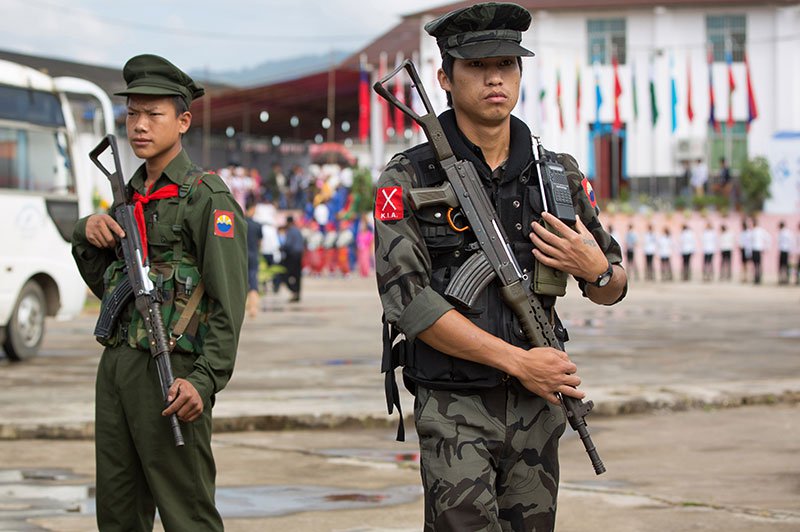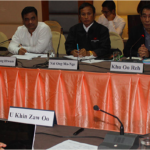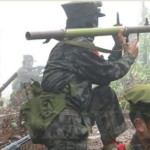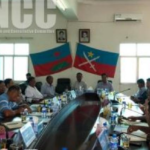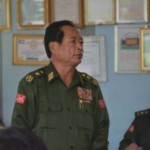By Joe Kumbun / Mizzima | July 3, 2017
The civil war which continues to rage in Kachin State has been going on for six years. The conflict started on 9 June2011, and since then a ceasefire has not yet been achieved, and domestic and international attention is slowly diminishing.
To date, after years of continuous Myanmar Army attacks including ground forces, artillery and airstrikes, thousands of combatants have lost their lives on the battlefields. Apparently, due to a defensive strategy, the Kachin Independence Organization/Army (KIO/KIA) has lost most of their strategic outposts – Hka Ya Bum, the most strategic peak in a mountain range five miles from Laiza, Bum Tawng, Hpun-pyen Bum, Gidon and Lai Hpawng outposts, No. 6 battalion in Hpakant and No. 8 Brigade in Indawgyi.
The worst incident throughout this conflict occurred when the Myanmar Army fired on the KIA’s Military Academy with 105 mm calibre ammunition on November 19, 2014. It killed scores of cadets, mainly from other ethnic-armed groups, with others injured. Due to the ongoing civil war, tens of thousands of Kachin civilians have been forced to live in temporary camps and shelters. Many have lost their property others have lost their lives. Innocent Kachin civilians have suffered gross human rights abuses. Some were raped, arrested, tortured, and killed on suspicion that they were affiliated with the KIO. The property has been looted and villages and churches burned.
After losing several outposts, many Kachin people and lower ranking KIA soldiers have sceptically questioned the Kachin Independence Organization’s Central Committee (KIOCC) for not allowing any offensive attacks against the Myanmar Army. Therefore, the KIO faces a dilemma.
Offensive Dilemma
The reason for the KIO avoiding an offensive against the Myanmar Army is to protect civilians. Since the KIO/A troops and its military regiments are stationed in ethnic areas, every conflict affects Kachin civilians.
The KIO’s policy is to protect civilians from any danger and thus avoid a military offensive against the Myanmar Army. Major General Sumlut Gun Maw also mentioned in the press on May 19, 2017, that the KIOCC does not allow its soldiers to conduct any offensives to avoid large scale collateral damage.
The KIOCC thus faces a hardship – if they start an offensive against the Myanmar Army, many civilian Kachin lives will be lost, but if they continue defensive positions, they have to give up military outposts to the Myanmar Army and thus the KIOCC will lose trust from rank-and-file soldiers.
Political Dilemma
After leaving the UNFC, the KIO, paradoxically, lost legitimacy in the eyes of international partners particularly Japan which financially supported and gave technical assistances to the UNFC. Additionally, many Kachins raised the question ‘Why did the KIO withdraw from the UNFC and what is the KIO’s next move?’
It is obvious that KIO’s next step is to follow the path of the UWSA-led alliance. The alliance includes the Kachin Independence Organization (KIO), National Democratic Alliance Army (NDAA), Shan State Progress Party/Shan State Army-North (SSPP/SSA-N), Ta’ang National Liberation Army (TNLA), the Kokang Myanmar National Democratic Alliance Army (MNDAA) and the Arakan Army (AA). The question, however, is how long can the KIO cooperate with the alliance, particularly the UWSA, and the Chinese government oriented peace path. In fact, the KIO has historically rejected Chinese’s ideology – both communism and Leninism. That was the reason the KIO did not get any major support from China, but instead minor support which allows KIO officials to travel inside their country across borderlines.
China will inject its policy – to maintain peace and stability around its periphery, into the Northern Alliance through the UWSA as quid pro quo. There is prima facie evidence that the UWSA has received modernized weaponry such as tanks, 105 mm mortars, sniper rifles, anti-tank weapons, and helicopters from China.
However, what does the KIO hope to get from the alliance, it is unlikely to stick to its policy of standing firmly together and helping each other when any member is under attack. This is unlikely to happen. Instead, China will attempt to stabilize its border through the UWSA-led alliance. It is a political dilemma for the KIO in that they have to follow any policy by the UWSA even if dissatisfied with it. A recent rumour is that the Federal Political Negotiations and Coordination Committee (FPNCC) led by the UWSA made a 3-point demand to the Myanmar government in the second session of the 21st Century Panglong Peace Conference. In a final decision, all members had to sign the agreement. However, the KIO requested other members give them time because they needed a consultation with the Kachin public. However, the UWSA firmly replied that they could not wait and they could adopt the proposal without the KIO. Thus, the KIO had to sign the proposal without the consent of the Kachin public. Therefore, the KIO had to follow policies made by the UWSA directed by Chinese government policy for border stability.
In fact, the KIO wants direct negotiation with the Myanmar Army to cease escalation of the conflict. However, the question is how much can the Myanmar Army accept the KIO proposal.
The way out
To overcome the dilemma, the KIO, in a worst-case scenario, can mount a stronger offense through the Northern Alliance and not use a defensive strategy. However, it is inevitable that an offensive will bring large scale collateral damage in the region.
The best-case scenario is a fruitful negotiation. The negotiation between the Myanmar Army and the KIO is a sine qua non position. It is the moment for both sides to seek any possible solution to cease escalation in Kachin and Northern Shan States in which conflicts continue to produce tens of thousands of internally displaced persons. Once both sides can manage a ceasefire, it is easier to build mutual trust for potential negotiations.
Fortunately, it is a prime moment for both sides to invite the international world into the peace process, as de facto leader Aung San Suu Kyi can persuade them to help. Lifting US economic sanctions on Myanmar exemplifies how powerful she is within the international arena. If both parties put concerted efforts into a negotiation, it is possible to produce fruitful results.
This article originally appeared on Mizzima on July 3, 2017.

